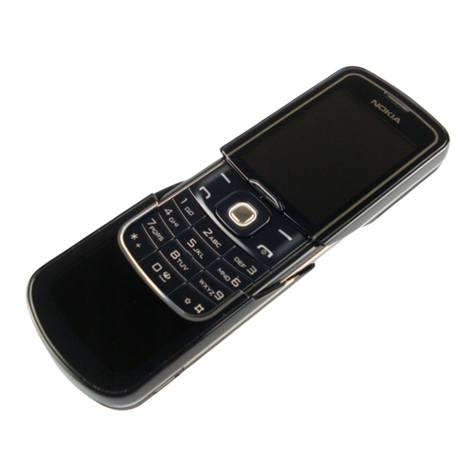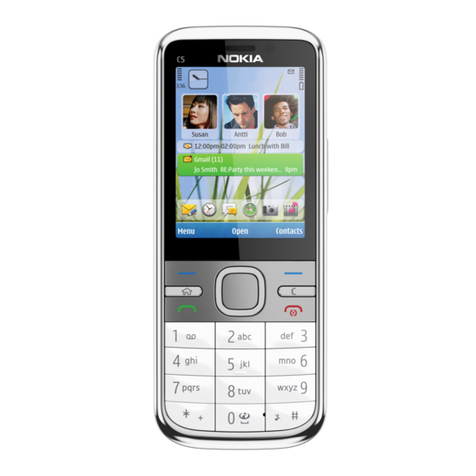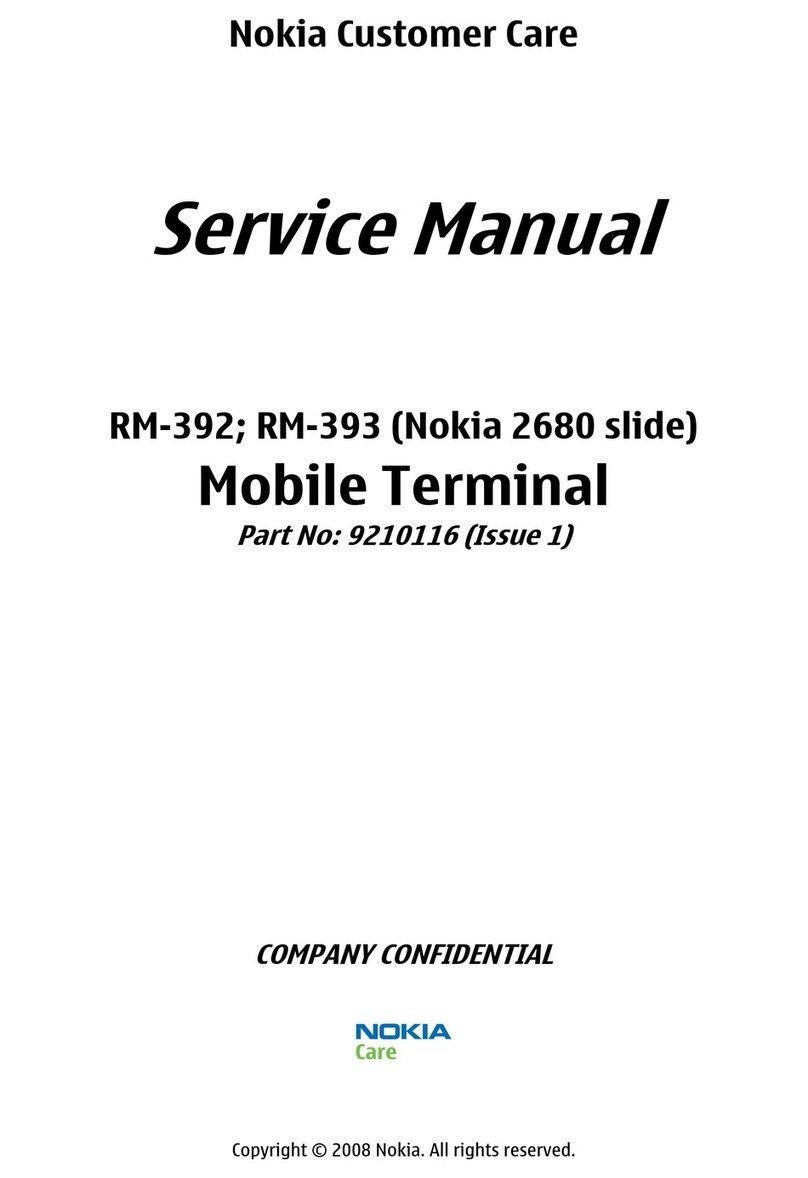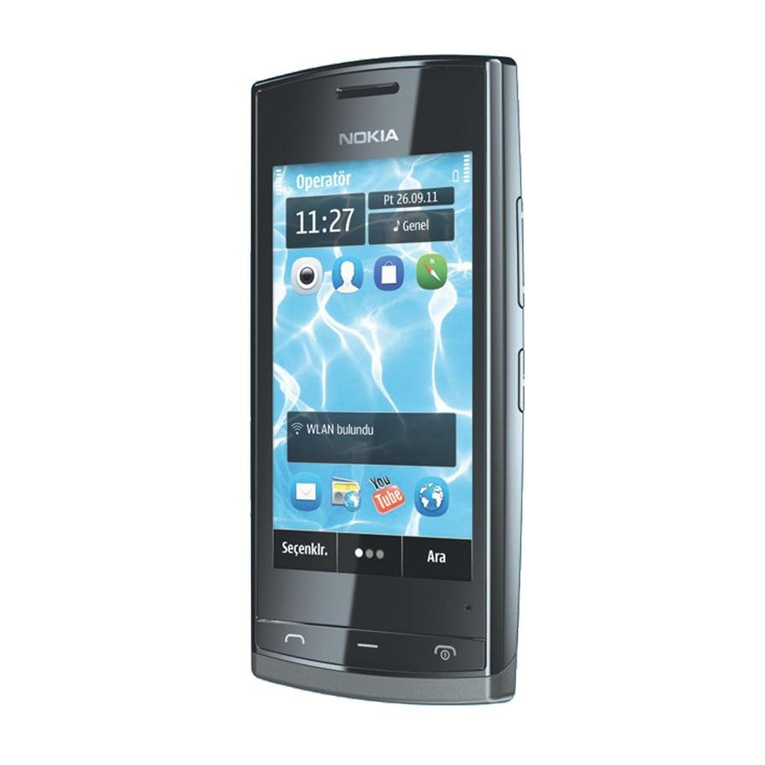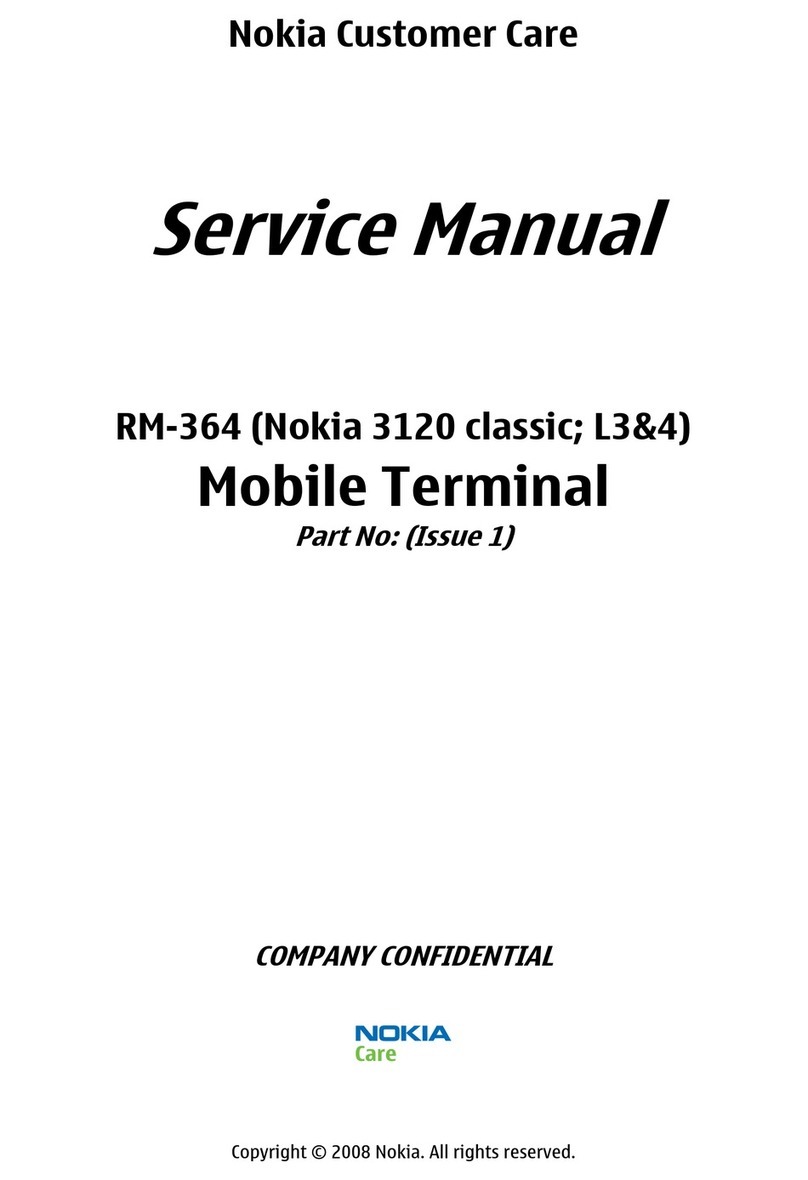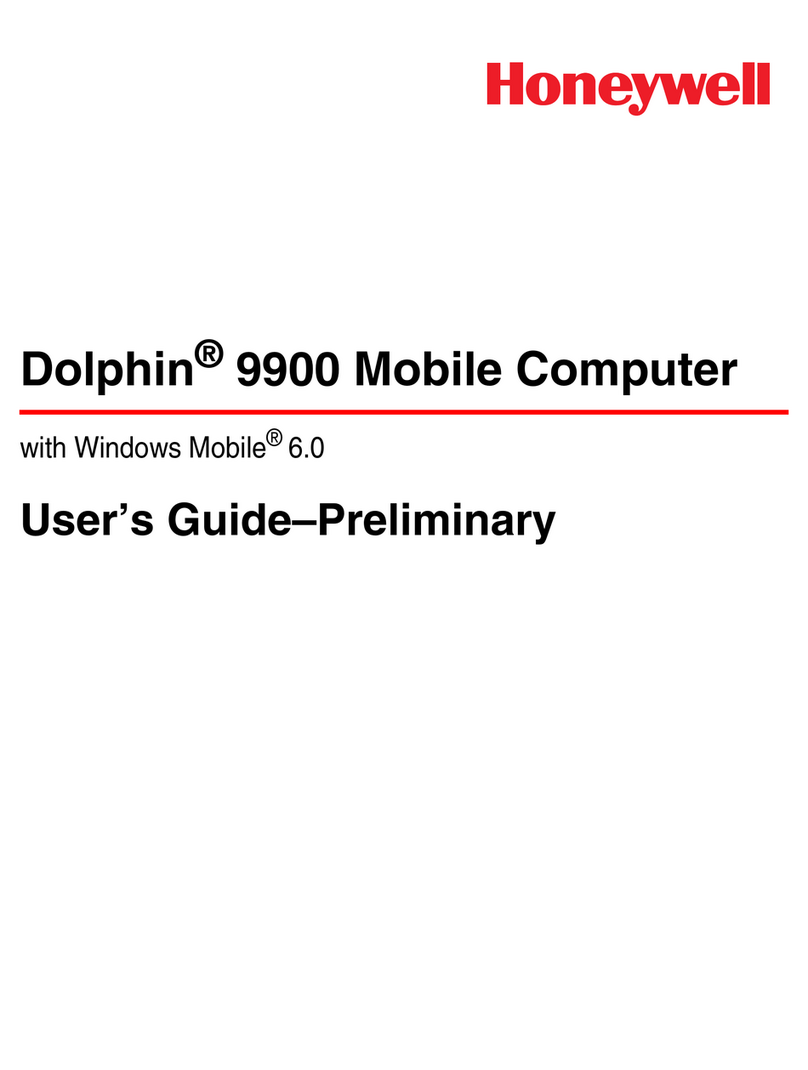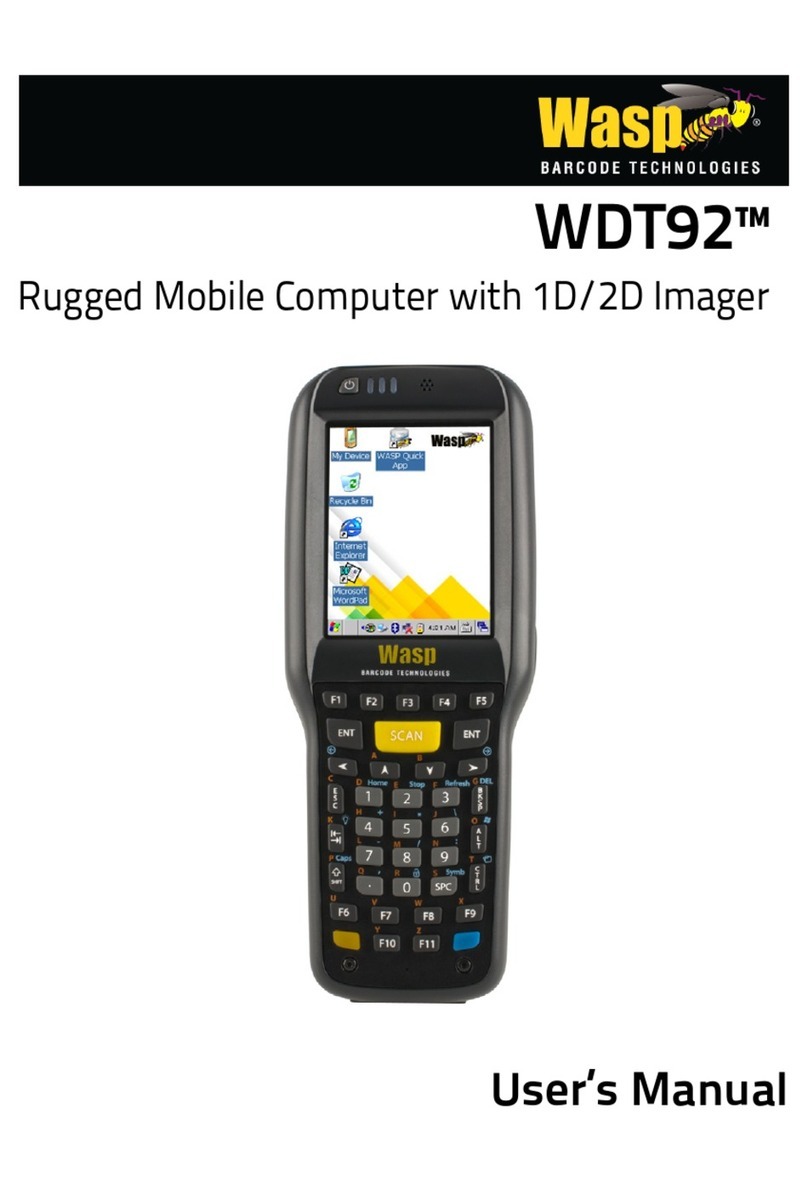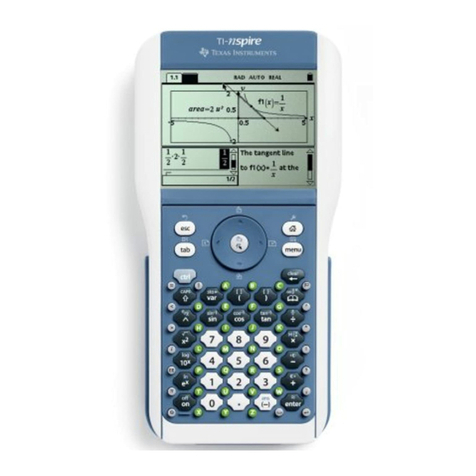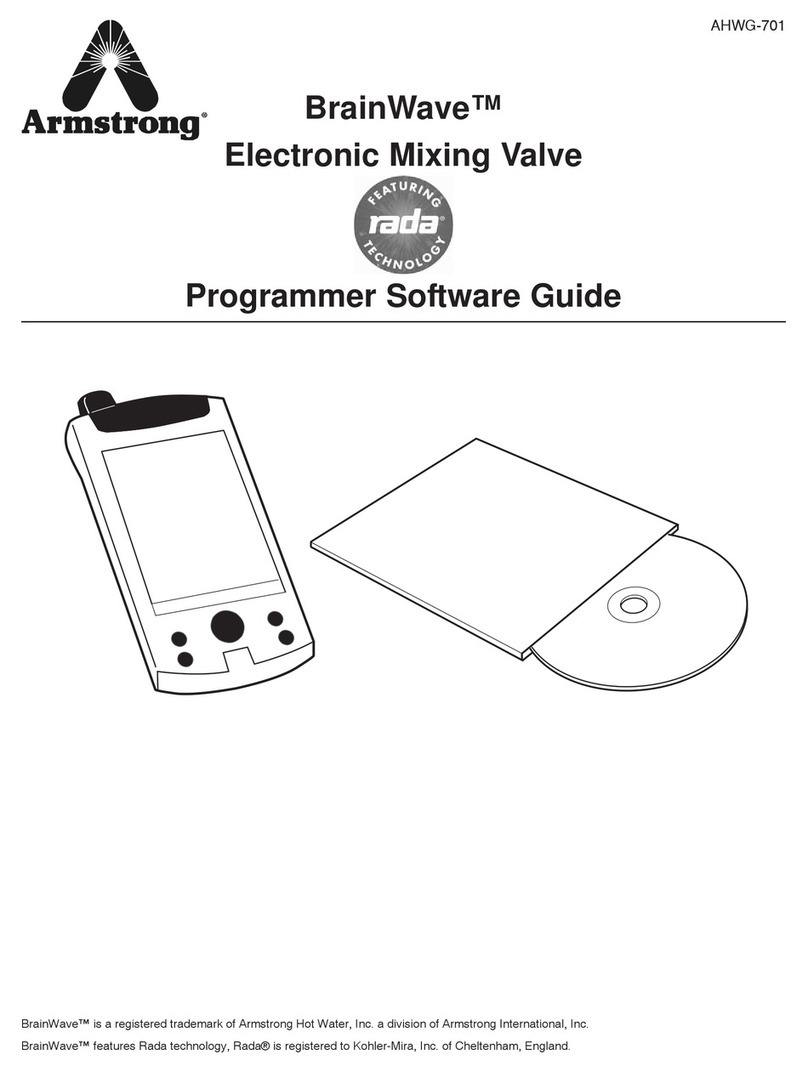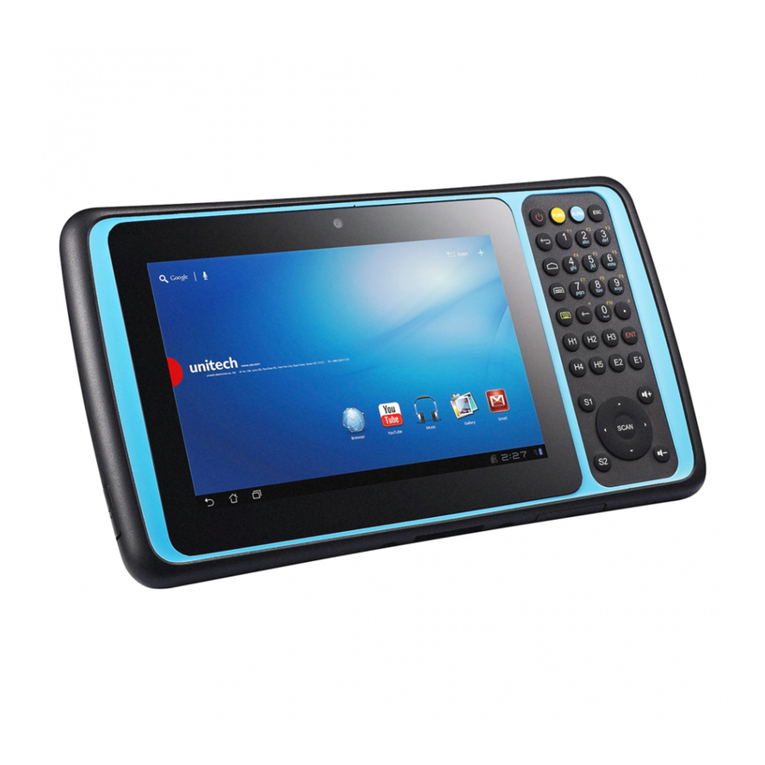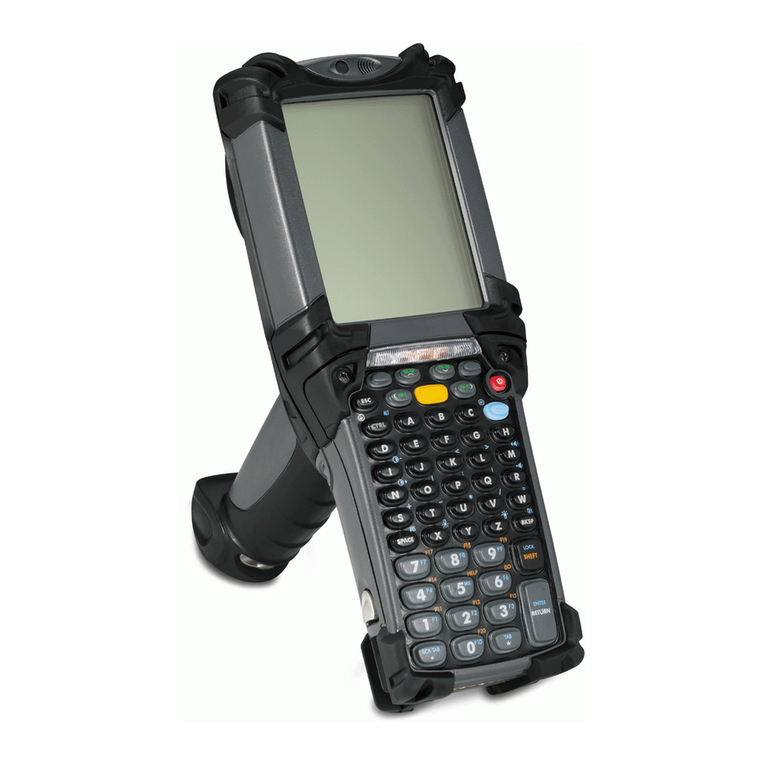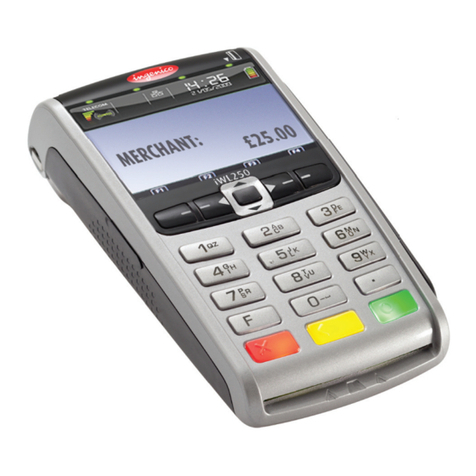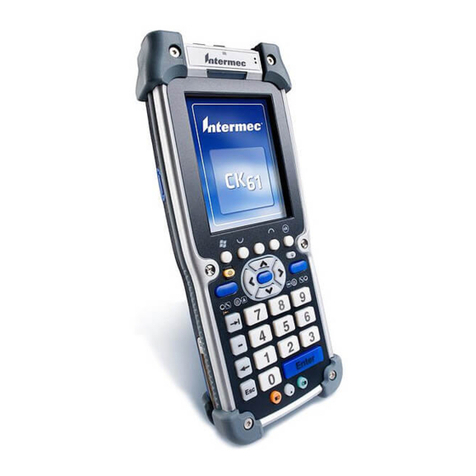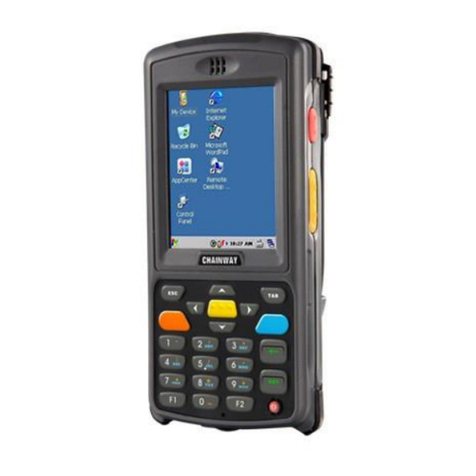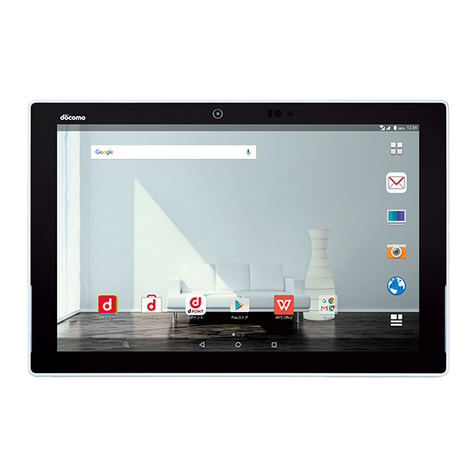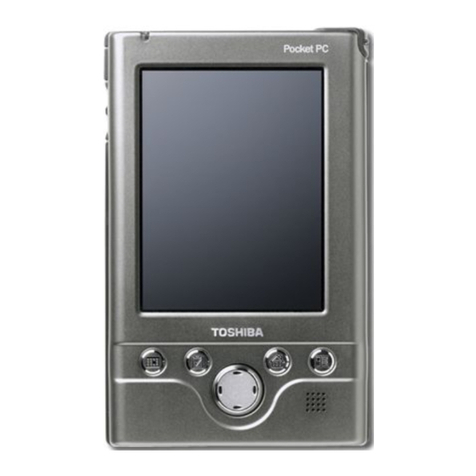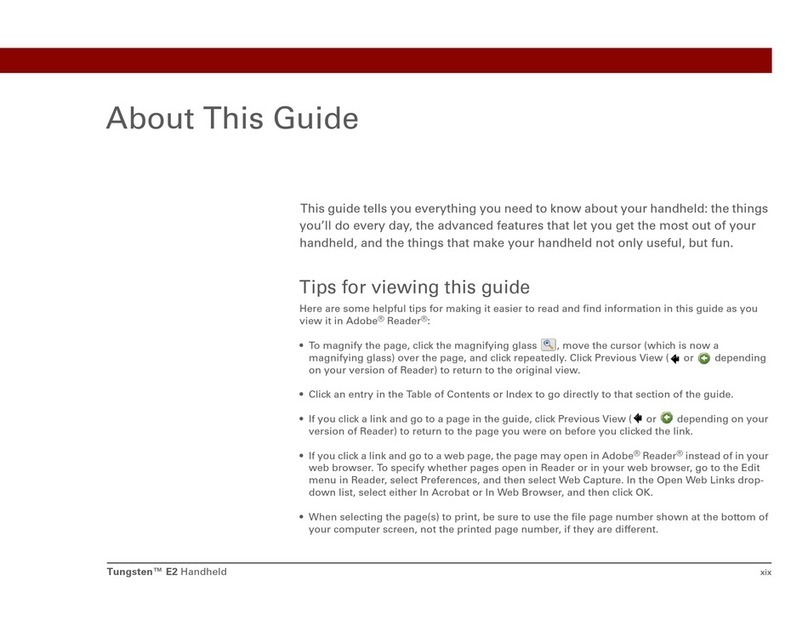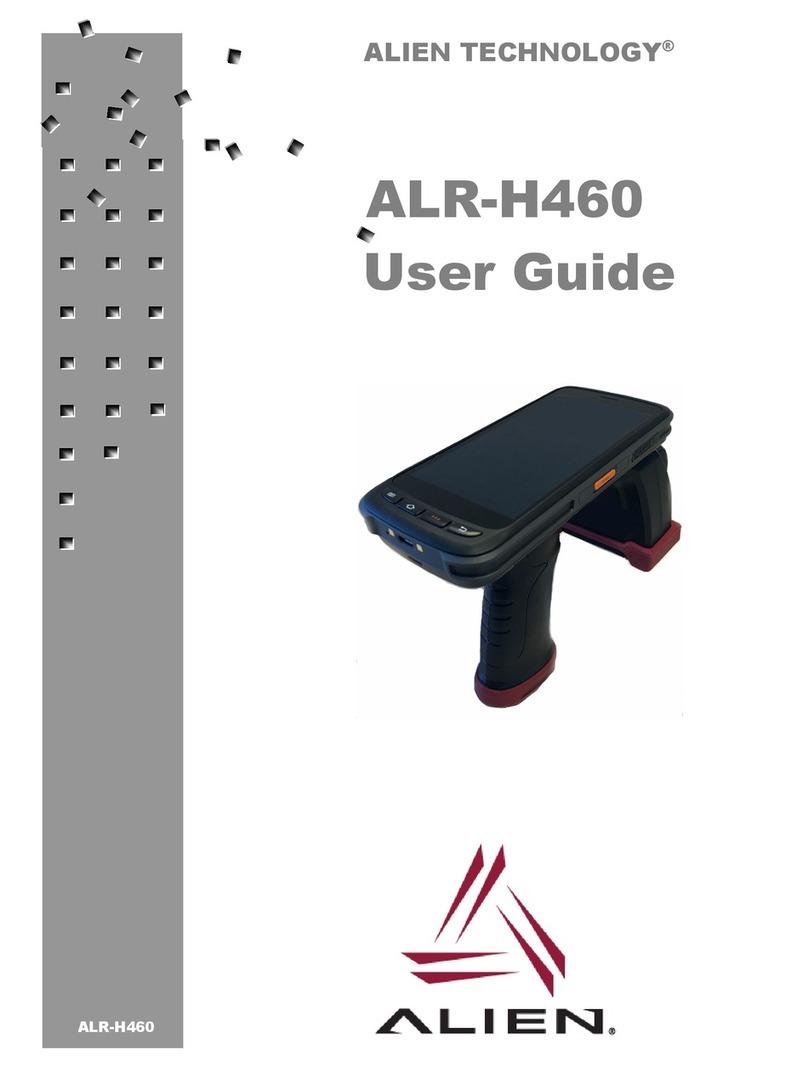
2125/2125i/2126/2126i/2128i (RH-71)
Antenna Description and Troubleshooting
Page 10 ©2005 Nokia Corporation Company Confidential ISSUE 1 08/2005
Testing the CDMA Antenna
Calibration Factors
Use the MJF-28 Docking Station Adapter to define the CPL-8 Antenna Coupler
calibration numbers. Obtain the calibration numbers by utilizing a mobile terminal with
known RF and antenna performance. Each test adapter should only require a single
calibration on PCS1900 and GPS bands at used test frequencies. Additional calibrations
should only be needed if the test adapter is substantially modified (reassembled, changed
parts, dropped, etc.).
Calibration Factor for PCS1900 Frequency
Use a call box to turn on the mobile terminal’s transmitter with a known output power
and antenna performance at the maximum output power (all bits up). Measure the
transmitted power on the RF connector and through a coupler at CDMA PCS channel
1175. Use the difference between the transmitted and received powers as the calibration
number (path loss on Cell band including coupler, cable, and attenuator path losses) for
the coupler on Cell band.
The nominal value for power measured at the RF connector is 23 dBm. The coupler path
loss is normally from 17 to 18 dB at the PCS band. If you use a 10 dB attenuator and a
cable with ~1 dB loss, the total path loss is from 28 to 29 dB and the measured power
should be from -5 to -6 dBm [23 dBm - (28…29 dB)]. However, you must measure path
loss separately for every coupler because path losses vary depending on the setup, cables,
and attenuator.
Measurement Procedure
Use the following measurement procedures for 800/1900 mobile terminals:
1. Place the mobile terminal in the MJF-28 Docking Station Adapter with the
display facing upward and its whip retracted.
2. Turn on the mobile terminal's transmitter at the PCS band on CDMA mode
channel 1175 at maximum output power (nominal 23 dBm at RF connector).
3. Measure the RF power with a CPL-8 Antenna Coupler. This represents the internal
antenna to RF coupler measurement.
4. Turn the mobile terminal's transmitter off.
The CDMA antenna test fails if the measured power is outside the test limits.
Table 1: CDMA Measurement Test Limits
Min Measured Power + Coupler,
Cable and Attenuator Path Loss Nominal Max Measured Power + Coupler,
Cable and Attenuator Path Loss
20,0 dBm 23 dBm 26,0 dBm






